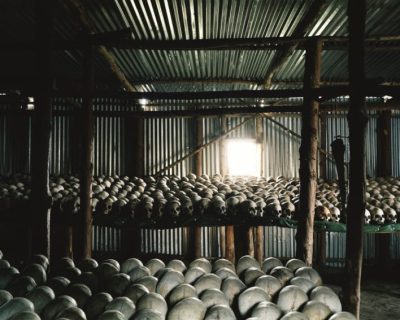
Since the health crisis started, many people have wanted to change their travel habits. But how do you discover destinations differently? New travel modes include ecotourism, wellness tourism, etc. many business have cropped up recently. Among them, dark tourism is flourishing as some tourists enjoy discovering macabre places.
When the macabre is attractive. With successive lockdowns, many have been refocusing on themselves and wondering how they can have new experiences. In particular, in the way they travel. More have, for instance, turned to dark tourism. It is a controversial form of tourism that involves organizing paid visits to places closely associated with death. A kind of commodification of suffering.
This type of tourism includes many places related to various themes, like old factories affected by natural or industrial disasters. For instance, tourism around the Chernobyl site has been exploding in recent years.
More specifically, it can involve former places of war, like the gulags in the former USSR, or the prisons where the Khmer Rouge in Cambodia tortured their opponents in the most gruesome ways. Finally, it can include « murder houses« , where many crimes have been committed. So it is a catch-all term.
Unhealthy initiative or genuine historical challenge?
The Auschwitz camp, a symbol of the extermination of Jews, is among the most infamous places in dark tourism. In an interview with National Geographic, the director of the Auschwitz Foundation and historian Frédéric Crahay said: « In memorial tourism, the purely entertaining aspect takes a back seat. It is the historical and memorial dimensions of the place visited that are emphasised. » A way for him to dissociate memorial tourism from pure macabre tourism.
Yet today, more and more tourists visiting Auschwitz seem disconnected from the memorial dimension. They take a selfie outside the entrance gates or they comment on their visit by describing the place as « pleasant. » A gap that illustrates the paradox of dark tourism.
For Ambroise Tézenas, a professional photographer in England and in France, dark tourism is not a form of tourism in itself: « This tourism is a perversion of memorial tourism. These are significant places, generally linked to macabre events and human tragedies, on which business is done, » he told The Washington Post. He has written a book on what he calls « desolation tourism« . He has photographed many memorial sites, including Chernobyl, Auschwitz and Rwanda. « For me the limit is the commercial aspect. Even in Auschwitz, it’s a bit of a distortion« , he says. So the line is quite blurred.
Fascination with evil
Fascination with the morbid is as old as time. « The appeal of the morbid is very old. Already in ancient Rome people attended public executions, » Ambroise Tézenas says. But the photographer adds that this appeal has gone up as a result of consumer society. With the health crisis, there is a growing demand to share new experiences.
« People are increasingly looking for the exceptional because now you can travel all over the world, there is a need for novelty at all costs, » he explains. « With COVID, I don’t know if the attraction for dark tourism has increased. But whatever happens, the exclusive fascinates, and this sector will continue to grow, because it’s an economy. » An economy that has been growing. Some 2.3m visitors passed through the Auschwitz camp in 2019, a record, according to the museum. A trend that seems to be here to stay.


